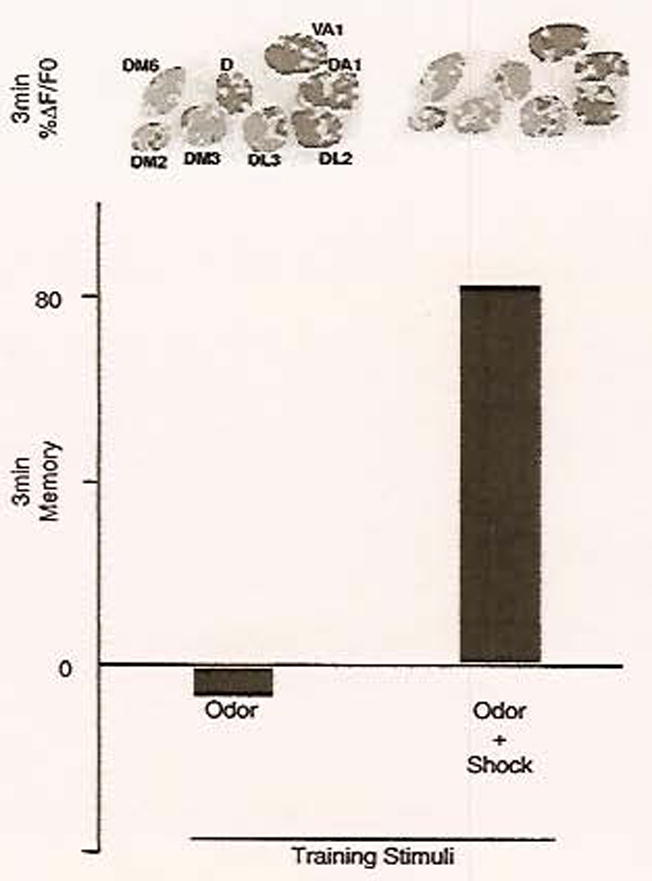Fig. 2.

The AL memory trace involves recruitment of new neurons into the representation of the learned odor and is correlated with behavioral memory. Flies were trained in an olfactory classical conditioning paradigm capable of generating short-term memory. Flies were trained with stimuli consisting of either odor alone, odor paired with shock, or other protocols (not shown). After training, flies were tested, either using a behavioral memory task or using functional imaging, for their response to the trained odor. Three-minute memory scores revealed that paired odor and shock, but not odor alone, was sufficient to form memory and behavioral avoidance of the trained odor (scores indicate the percentage of flies that demonstrated learned behavior). In the flies that were tested using functional imaging, changes in the pattern of optical reporter activity were also observed in response to training with odor and shock; specifically, activity in the PNs of glomerulus D was only elicited when these stimuli were delivered simultaneously. Pseudocolor images indicate the percentage change in fluorescence of the optical reporter during odor stimulation. In this preparation, eight glomeruli were visible and identifiable. These results correlate the cellular memory trace with learned behavior. Adapted with permission from Yu et al. (2004). (See Color Plate 18.2 in color plate section.)
